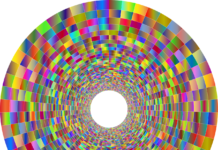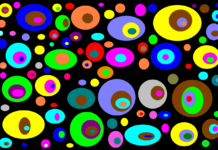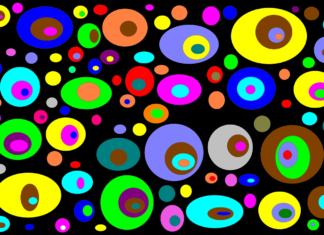Silhouette Analysis is a popular method for evaluating the quality of clustering in data analysis. It is a graphical representation that provides information about how well each data point fits into its assigned cluster. The Silhouette Analysis provides a measure of how similar a data point is to its own cluster compared to other clusters. It is widely used in various fields, such as market segmentation, customer behavior analysis, and image segmentation. In this article, we will dive deep into the Silhouette Analysis and explore its various aspects.
Silhouette Analysis is a technique used to evaluate the quality of clustering results. It provides a graphical representation of the quality of clustering by measuring the distance between each data point and its assigned cluster. The Silhouette Analysis measures the similarity of each data point to its assigned cluster and the dissimilarity of each data point to the neighboring clusters. This information is presented in the form of a silhouette plot, which is a visualization of the Silhouette Analysis. The silhouette plot displays a measure of how tightly grouped the samples in the cluster are.
In Silhouette Analysis, the silhouette coefficient is the main metric that is used to evaluate the quality of clustering. The silhouette coefficient measures the similarity of a data point to its own cluster compared to other clusters. The silhouette coefficient ranges from -1 to 1, where a value of 1 indicates that the data point is well matched to its own cluster, while a value of -1 indicates that the data point is better suited to a neighboring cluster. A value of 0 indicates that the data point is on the boundary between two clusters.
To perform Silhouette Analysis, the first step is to cluster the data using a clustering algorithm such as k-means or hierarchical clustering. Once the clustering is complete, the Silhouette Analysis can be performed to evaluate the quality of the clustering. The Silhouette Analysis involves computing the silhouette coefficient for each data point in the dataset. The silhouette coefficients are then used to create a silhouette plot.
In the silhouette plot, each data point is represented by a vertical line that corresponds to its silhouette coefficient. The height of the line represents the density of the cluster to which the data point belongs. The thickness of the line represents the number of data points in the cluster. The silhouette plot is often colored to indicate the cluster assignment of each data point.
The silhouette plot can be used to identify the number of clusters that provides the best clustering solution. A good clustering solution will have a high average silhouette coefficient across all data points. A high average silhouette coefficient indicates that the clusters are well separated and the data points within each cluster are tightly grouped. On the other hand, a low average silhouette coefficient indicates that the clusters are poorly separated, and the data points within each cluster are not tightly grouped.
There are some limitations to using Silhouette Analysis. One limitation is that it assumes that the data is clustered around a spherical shape. If the data is clustered around a non-spherical shape, the Silhouette Analysis may not accurately evaluate the quality of the clustering. Another limitation is that the Silhouette Analysis does not take into account the distribution of the data points within each cluster.
In conclusion, Silhouette Analysis is a powerful technique for evaluating the quality of clustering results. It provides a graphical representation of the quality of clustering by measuring the similarity of each data point to its assigned cluster and the dissimilarity of each data point to the neighboring clusters. The Silhouette Analysis can be used to identify the number of clusters that provides the best clustering solution. However, it is important to keep in mind the limitations of the Silhouette Analysis when using it to evaluate clustering results.
Despite its limitations, Silhouette Analysis remains a popular technique for evaluating the quality of clustering results. One reason for its popularity is that it is easy to implement and interpret. The silhouette plot provides a clear visualization of the quality of clustering, making it easy to identify clusters that are poorly separated or have data points that are not tightly grouped.
Silhouette Analysis is not limited to just evaluating the quality of clustering. It can also be used to identify outliers in the data. Outliers are data points that are significantly different from the rest of the data. Outliers can negatively impact the quality of clustering results, so it is important to identify and remove them before performing clustering. Silhouette Analysis can be used to identify outliers by looking for data points with a negative silhouette coefficient. These data points are better suited to neighboring clusters and may be outliers.
Silhouette Analysis can also be used to compare different clustering algorithms. Different clustering algorithms may produce different results, and Silhouette Analysis can be used to evaluate the quality of each clustering solution. For example, if two clustering algorithms produce different numbers of clusters, Silhouette Analysis can be used to determine which solution provides the best clustering result. Similarly, if two clustering algorithms produce the same number of clusters, Silhouette Analysis can be used to determine which solution has a higher average silhouette coefficient.
There are several variations of Silhouette Analysis that can be used to evaluate the quality of clustering results. One variation is the adjusted silhouette coefficient, which takes into account the density and distribution of the clusters. The adjusted silhouette coefficient is a more accurate measure of the quality of clustering, especially for datasets with varying cluster densities and sizes.
Another variation of Silhouette Analysis is the silhouette width, which is a measure of the average distance between clusters. The silhouette width can be used to evaluate the separation between clusters, in addition to the tightness of the clusters. The silhouette width is calculated by taking the average distance between all pairs of data points in different clusters.
Silhouette Analysis can also be extended to evaluate the quality of clustering in high-dimensional data. High-dimensional data has many features or dimensions, which can make it difficult to evaluate the quality of clustering using traditional methods. Silhouette Analysis can be extended to high-dimensional data by using dimensionality reduction techniques such as principal component analysis (PCA) or t-distributed stochastic neighbor embedding (t-SNE).
Silhouette Analysis has several practical applications in various fields. In marketing, Silhouette Analysis can be used to segment customers based on their behavior or preferences. In image segmentation, Silhouette Analysis can be used to segment objects in images based on their similarity. In bioinformatics, Silhouette Analysis can be used to cluster genes based on their expression profiles.
In summary, Silhouette Analysis is a powerful technique for evaluating the quality of clustering results. It provides a graphical representation of the quality of clustering by measuring the similarity of each data point to its assigned cluster and the dissimilarity of each data point to the neighboring clusters. Silhouette Analysis can be used to identify the number of clusters that provides the best clustering solution and to compare different clustering algorithms. Silhouette Analysis has several practical applications in various fields and can be extended to high-dimensional data using dimensionality reduction techniques. However, it is important to keep in mind the limitations of Silhouette Analysis when using it to evaluate clustering results.






















